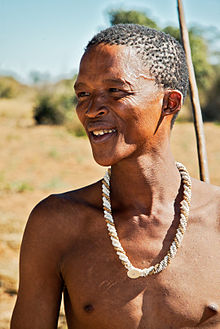Table of Contents
Best 8 Reasons To Visit Kgalagadi Transfrontier Park In South Africa
The best 8 reasons to visit Kgalagadi Transfrontier Park are; Landscape, Black-maned desert kings, Photography, San Culture, Bird watching, Wildlife and Camps. The park is in the Kalahari Desert region of Botswana and South Africa, bordering Namibia to the west. It’s characterized by red dunes and dry rivers that give the beauty and diversity of South African National Parks. 73% of the frontier is in Botswana and the 27% lies in South Africa.
Kgalagadi Transfrontier Park was officially established in 2000 by the merger of South Africa’s Kalahari Gemsbok National Park with Botswana’s Gemsbok National Park. It is in the southern part within the Kalahari desert. Wildlife includes migrating herds of wildebeest and springbok, plus predators like raptors and black-maned Kalahari lions. Various lodges and wilderness camps offer game-viewing drives and guided walks with park rangers.
Here are the best 8 reasons to visit Kgalagadi Transfrontier Park in South Africa;
1. The landscape at Kgalagadi Transfrontier Park
The land which Kgalagadi Transfrontier Park encompasses is captivating, predominantly because of its uniqueness. Desolate and sparse, red-gold dunes extend as far as the eye can see, dotted with shrubbery, wispy white grasses and frequent pockets of thorn trees, providing welcome shelter for the various animal species and plant species living within the park’s confines.
It is a harsh place, where survival is an art leading to fascinating adaptations in the area’s animal residents. When the storm broke, the desert was transformed, but these metamorphoses will be short-lived when the sun shines the rivers will dry up within a few days.
2. Photography at Kgalagadi Transfrontier Park
The scenery around Kgalagadi Trans frontier Park is pretty amazing regardless of where you go. But if we are comparing to places like Kruger the semi-arid environment of the Kgalagadi has such a stark beauty and it is perfect for photography. There is way lesser vegetation compared to other safari areas in Southern Africa, which makes spotting wildlife easier and photography easier.
On top of that, the animals get their water from man-made waterholes which are conveniently placed along roads for you to see lions and cheetahs drinking.
3. The black-maned desert kings at Kgalagadi Transfrontier Park
The desert’s lions lie lazily under obliging camel thorn trees by day, while at night their rasping moans betray their hunting ambitions. Over a herd of 7 000 eland, provide easy prey for the lions who simply wait by the waterholes to pounce on the unsuspecting and slow-moving buck.
4. Culture of the local San people at Kgalagadi Transfrontier Park
The Kalahari Red Dune Route brims with cultural activities offered by the Kho Mani San people. The original inhabitants of this region in the Kalahari Desert were the “San” people that were joined by the black Western Sotho tribes, who were part of the southern migration which took place during the 14th and 15th centuries.
These black tribes lived in relative peace with the “San” people. It wasn’t until the 1800s that the first settlers arrived from the Cape Colony and adjacent Namibia to trade with the people living in the Kalahari. The word Kalahari is derived from the Setswana word Kgalagadi meaning, “the great thirst”.
 |
5. Birds watching at Kgalagadi Transfrontier Park
The trans frontier park of the park is also a rich bird haven with more than 200 species of bird can be found in the park, including vultures and raptors such as eagles, buzzards, and secretary birds where species of birds like the Verreaux’s eagle owl, which is identifiable by its massive wing span, whitish oval-disk face and pink eyelids, the pygmy falcon, martial eagle, bateleur, pale chanting goshawk, swallowtail bee-eater and Kori bustard.
6. Campsites at Kgalagadi Transfrontier Park
Stay within the camping site at the park gives some amazing and joyous experience for instance; Twee Rivieren is lovely however there are other camps like Bitter pan, Kieliekrankie, Urikaruus or the Gharagab Wilderness Camp. A great feeling and experience are real while in Kgalagadi trans frontier park.
7. Wildlife viewing at Kgalagadi Transfrontier Park
Although this park has a limited number of species it has abundant, wildlife. large populations of predators including lions, cheetahs and leopards as well as hyenas, bat-eared foxes, yellow mongoose. large herds of springbuck, wildebeest, giraffes. Migratory herds of large herbivores such as blue wildebeest, springbok, eland, and red hartebeest also live and move seasonally within the park, providing sustenance for the predators.
8. Mighty migrations at Kgalagadi Transfrontier Park
Witness the spectacular seasonal migrations of the park’s herbivorous residents, including flighty herds of blue wildebeest, pronking springbok and majestic red hartebeest.
Other than the best 8 reasons to visit Kgalagadi Transfrontier Park, there are so many other amazing things about this lovely park in South Africa.
When to visit Kgalagadi Transfrontier Park
The park is open to visitors all year long however the best time to visit is between March to May when the wet season has just come to an end. Around this time the rivers are filled to the brim and the river banks are full of lash green grasslands which attract so many animals for grazing and hydrating. Visiting around this time supports game viewing and bird watching safaris.
From May to September it is the dry season which also supports game viewing under the warm rays of the sun. It is perfect timing to tour and travel.
How to access Kgalagadi Transfrontier Park
This can either be by road or air transportation modes. Access to the park can be made through 5 different gates.
By Road
You can use either a private or public 4x4WD vehicle when traveling to the park. This type of vehicle is ideal for the gravel nature of the roads within the park. There are 2 main roads from South Africa to Twee Rivieren gate at the park. This will take you about 10-11hrs on the road.
Accommodation at Kgalagadi Transfrontier Park
